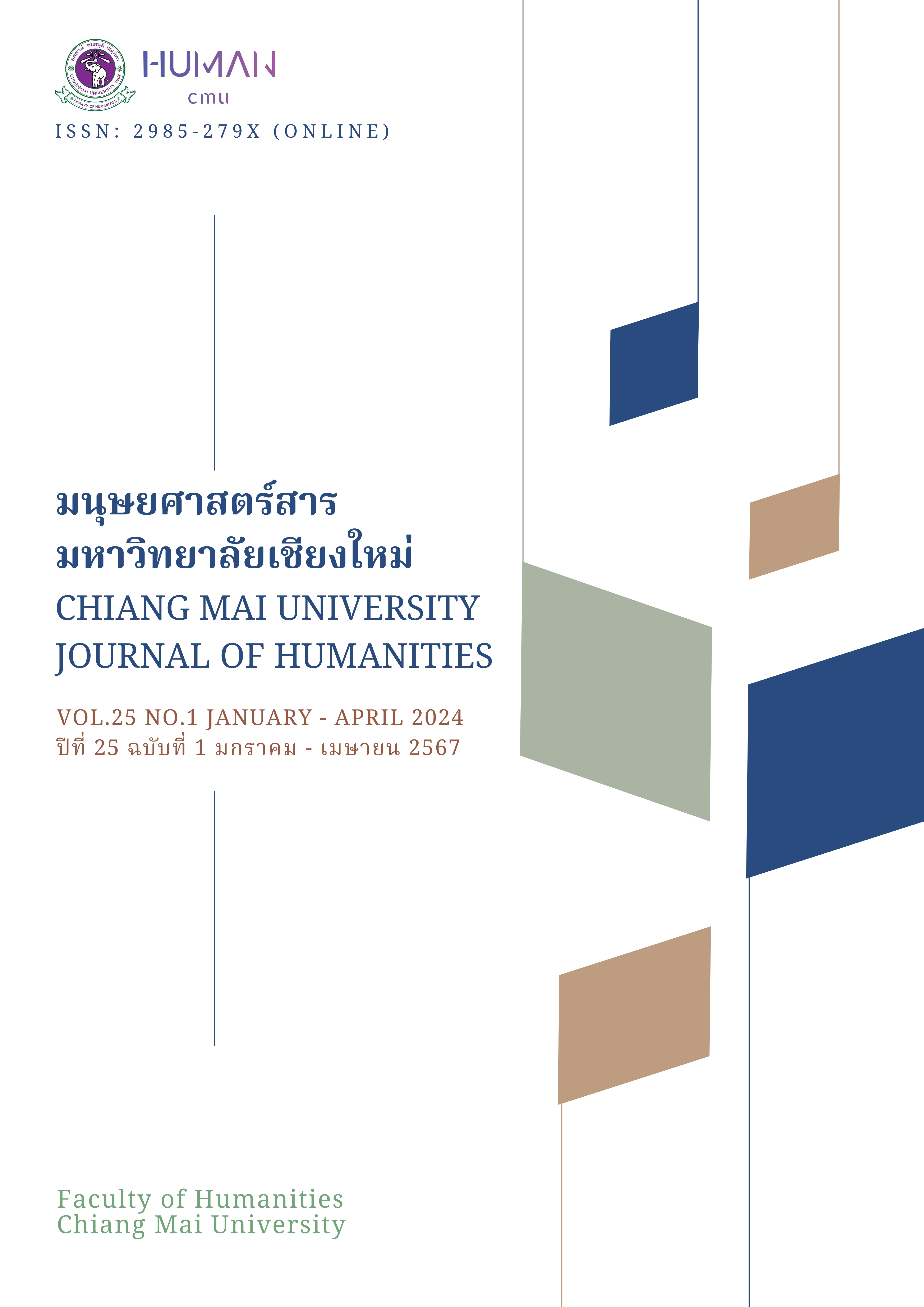Politics, Government, and Religious Beliefs: The reign of King Rājendravarman II (944-968 AD) as reflected in the East Mebon Inscription k.528
Main Article Content
บทคัดย่อ
This paper explores the East Mebon Inscription k.528, an archaeological artifact from the 10th century Khmer civilization, to examine the reflections of politics, government, and religious beliefs within its content. The inscription sheds light on the political organization and governance under the reign of King Rājendravarman II (944-968 AD), emphasizing the role of the king as a central figure with divine attributes. It also reveals insights into the religious practices and beliefs, highlighting the association between the ruler and Hindu deities, particularly Lord Śiva. Furthermore, the inscription offers glimpses into the social hierarchy and the elevated status of the ruling elite. By analyzing the East Mebon Inscription k.528, this paper elucidates the intricate interplay between politics, government, and religious beliefs within the empire society, under the reign of the king who bought the protector of the royalty back to Angkor (Yaśodharapura), and attempted to reunite again the Khmer empire.
Article Details

อนุญาตภายใต้เงื่อนไข Creative Commons Attribution-NonCommercial-NoDerivatives 4.0 International License.
เอกสารอ้างอิง
A. P. Mahesh Kumar Sharan. (2003). Studies In Sanskrit Inscriptions Of Ancient Cambodia. Abhinav Publications.
C. Higham. (1989). The Archaeology of Mainland Southeast Asia: From 10,000 B.C. to the Fall of Angkor. Cambridge University Press.
Coedes, G. (1964). THE INDIANIZED STATES OF SOUTHEAST ASIA. (Edited by Walter F. Vella, Translated by Susan Brown Cowing). East-West centre Press, Honolulu.
Finot Louis. (1925). Insriptions d'Angkor, pp.289-409. Bulletin E.F.E.O. Tom25.
Kaewna, Phramahapramote. (2016). The East-Mebon Inscription: The Reflection of the history in reign of King Rajendravarman II. Journal of International Studies, Prince of Songkla University, 6(1), 9-36.
. (2017). An Analytical Study of The East Mebon Inscription. Doctoral Dissertation, Ph.D. in Sanskrit Studies, Silapakorn University, Thailand. (In Thai)
Lours FINOT. (1925). INSCRIPTIONS D'AṄKOR, Bulletin de l'École française d'Extrême-Orient, Vol. 25, No. 3/4 (1925), pp. 289-407. Published by: École française d’Extrême-Orient.
M. C. Ragavan. (1998). Angkor and the Siem Reap Region: A Comprehensive Bibliography of Publications: Covering the History, Archaeology, Art, Architecture, Inscriptions, Culture and Related Subjects Published in Monographs, Periodicals, Series, Reports and Other Publications, Unesco Cambodia.
Mahesh Kumar Sharan. (1974). Studies in Sanskrit inscriptions of ancient Cambodia, on the basis of first three volumes of Dr. R. C. Majumdar's edition. Abhinav Publications.
. (1981). Select Cambodian Inscriptions: the Mebon and Pre Rup inscriptions of Rajendra Varman II, S.N. Publications.
Aktor, M. (2017). The Hindupañcāyatanapūjāin the aniconism spectrum. Religion, 47(3), 503–519. https://doi.org/10.1080/0048721x.2017.1312740.


